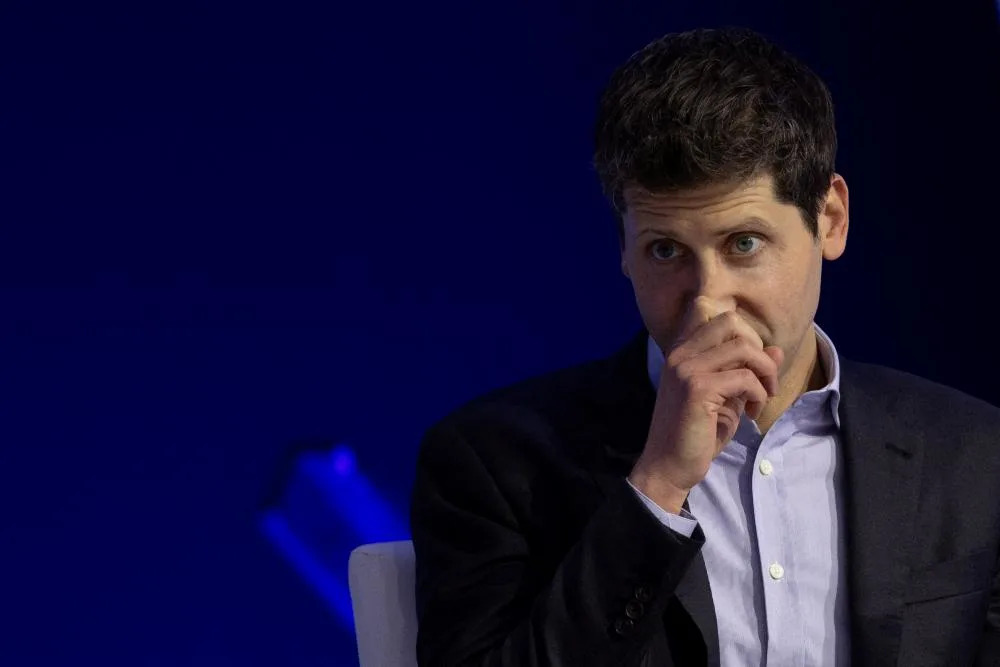Adam Lowenstein in Washington
Fri, November 24, 2023
LONG READ
Public trust in some of the world’s most repressive governments is soaring, according to Edelman, the world’s largest public relations firm, whose flagship “trust barometer” has created its reputation as an authority on global trust. For years, Edelman has reported that citizens of authoritarian countries, including Saudi Arabia, Singapore, the United Arab Emirates and China, tend to trust their governments more than people living in democracies do.
But Edelman has been less forthcoming about the fact that some of these same authoritarian governments have also been its clients. Edelman’s work for one such client – the government of the UAE – will be front and center when world leaders convene in Dubai later this month for the UN’s Cop28 climate summit.
The Guardian and Aria, a non-profit research organization, analyzed Edelman trust barometers, as well as Foreign Agent Registration Act (Fara) filings made public by the Department of Justice, dating back to 2001, when Edelman released its first survey of trust. (The act requires US companies to publish certain information about their lobbying and advocacy work for foreign governments.) During that time Edelman and its subsidiaries have been paid millions of dollars by autocratic governments to develop and promote their desired images and narratives.
Polling experts have found that public opinion surveys tend to overstate the favorability of authoritarian regimes because many respondents fear government reprisal. That hasn’t stopped these same governments from exploiting Edelman’s findings to burnish their reputations and legitimize their holds on power.
Edelman’s trust barometer is “quoted everywhere as if this is some credible, objective research from a thinktank, whereas there is a fairly obvious commercial background, and it’s fairly obviously a sales tool,” said Alison Taylor, a professor at New York University’s business school. “At minimum, the firm should be disclosing these financial relationships as part of the study. But they’re not doing that.”
An Edelman spokesperson said in a statement emailed to the Guardian: “As a global firm, we believe it is important to work with clients and in markets around the world that are transforming –economically, politically, socially, environmentally, and culturally.
“We believe our presence in the Middle East can help drive change by counseling influential organizations, advising on expectations for business and brands today, and building new stakeholder relationships.”
‘The government’s efforts are paying dividends’
The government of the UAE became an Edelman client in 2007. Over the next two years, as DeSmog, a non-profit publication that investigates climate misinformation, has reported, Edelman was paid more than $6m for its work improving the sustainability reputation of the UAE and the Abu Dhabi National Oil Company, or Adnoc, a state-run oil giant. These efforts culminated in the UAE being selected to host this year’s UN climate conference.
In 2010 Edelman and a subsidiary signed two more contracts to work on behalf of the Emirati government, including the production of a “Beltway barometer survey” to measure public opinion “among policymakers and influencers in Washington DC”. The following year the UAE appeared in the Edelman trust barometer for the first time.
Edelman did not respond to questions about whether the UAE government’s decision to hire the firm in 2010 was connected to the country’s inclusion in the trust barometer the following year, or whether Edelman offers potential or current government clients the opportunity to be included in the survey as a benefit of hiring the firm.
Since the UAE’s first appearance in 2011, Edelman’s surveys have routinely reported that citizens of the country strongly trust their government – a finding that Edelman and Emirati media have been happy to endorse.
“According to Edelman, the NY-based company, the UAE’s plans and strategies contributed to the trust in performance it earned over the year,” tweeted Sheikh Mohammed bin Rashid Al Maktoum, the prime minister and vice-president of the UAE and ruler of Dubai, after the release of the 2014 trust barometer. “The people’s trust in the government is a result of the leadership closeness to them and attending to their needs and demands.”
Tod Donhauser, the executive then running Edelman’s UAE business, used similar language in a 2018 blogpost on Edelman’s website. “This year’s Edelman trust barometer results suggest that the government’s efforts to protect the public from fake news are paying dividends,” Donhauser wrote.
Three months after Donhauser praised the government for “combating fake news” and “uniting the country behind a common purpose and elevating trust levels”, a UAE court sentenced activist Ahmed Mansoor to 10 years in prison. Mansoor’s charges included “publish[ing] false information, rumors and lies about the UAE” on Twitter and Facebook that “would damage the UAE’s social harmony and unity”, Amnesty International reported.
Mansoor had been arrested the previous year for “spreading sectarianism and hatred on social media”. He remains in prison.
Donhauser, who no longer works for Edelman, did not respond to requests for comment. The firm did not respond to questions about the blogpost.
‘The system works in terms of trust’
Edelman’s chief executive, Richard Edelman, was asked why he thought authoritarian regimes fared so well in the trust barometer at a discussion hosted by the Atlantic Council, a Washington thinktank, in February.
“There’s one hypothesis: that the difference in information issued by government and by media in those countries is very small, whereas here, you know, media is doing its job. It’s saying, ‘What they say on Capitol Hill is not true,’” Edeleman replied. “There’s much higher trust in media in those countries that are single party than there is in democracies, maybe because there’s one line.”
Edelman continued: “I’m not a fan of authoritarian government. I’m a kid who grew up in democracies. But the system works in terms of trust, and that’s all I can tell you.”
In its statement, the Edelman spokesperson said: “The trust barometer seeks to help businesses, organizations and institutions understand how personal attitudes interconnect to shape broader societal forces.
“For a number of reasons, including strong economic performance over a decade, developing nations around the world tend to show high levels of trust among internal respondents.”
At the time of the Atlantic Council event, Edelman was in the middle of at least four different contracts to represent the interests of the governments of the UAE and Saudi Arabia, repressive regimes under which human rights are regularly threatened, civil and political liberties are mostly non-existent, and dissidents and critics are routinely harassed and imprisoned. Edelman has since agreed to additional work for the Emirati and the Saudi governments.
Even as he spoke on stage about trust, Richard Edelman himself had been, and currently remains, registered with the US government as a foreign agent personally representing the interests of the Saudi ministry of culture. Politico described Richard Edelman’s decision to register as “a rare move for such a high-ranking executive of such a massive agency”.
“We have more than 2,000 clients globally spanning both the public and private sector across various industries,” the Edelman spokesperson said. “We publicly disclose those engagements subject to [Fara] in line with the regulatory requirements. When individuals have performed services that require registration under Fara, Edelman works to ensure that a registration is completed for those individuals.”
In June, the firm submitted a redacted email to the justice department from a company executive inviting a recipient to coffee in New York City with Hamed bin Mohammed Fayez, Saudi Arabia’s deputy culture minister. “The ambition of KSA [Kingdom of Saudi Arabia] is stunning,” the sender wrote.
A few months later Richard Edelman hosted a “small dinner” for Fayez, one of at least three networking events that he has personally hosted for Saudi officials over the past year and a half.
The company did not respond to a question about whether Richard Edelman is regularly involved in client work for foreign governments.
Earlier this year, Richard Edelman told PR Week that he recently “went around with the minister of culture” and “visited six cultural institutions, and one of them is now considering putting a school into Saudi”. Richard Edelman said: “That is the kind of engagement that I want to have because Saudi is on a continuum of change. That is the kind of work we want to be doing: engagement in the important issues and challenges of our time.”
The New York Times has described the culture minister as “a friend and associate” of the Saudi crown prince, Mohammed bin Salman. Under the crown prince’s rule, “Saudi Arabia has undergone one of the worst periods for human rights in the country’s modern history,” Human Rights Watch’s Joey Shea told a US Senate committee in September.
Edelman did not respond to questions regarding whether Richard Edelman worries about the Saudi culture ministry’s close ties with the crown prince, or if he is concerned that his firm’s work for the governments of Saudi Arabia and the UAE risks sanitizing or shifting public attention away from the countries’ records on human rights and civil and political liberties.
‘Boosting the confidence citizens have in the government’
In recent years Edelman’s business in the Middle East has grown more lucrative as the firm has cultivated deeper ties with Saudi Arabia. While Edelman began working for the Saudi government in 2013, the country did not show up in the trust barometer until 2019. This appearance came fewer than three months after the crown prince approved the assassination of the journalist and Washington Post columnist Jamal Khashoggi, a prominent critic of the regime and the country’s heavy-handed rule.
Edelman’s trust surveys include the dates during which it conducts “fieldwork” – the online and telephone interviews from which its findings are derived. Edelman reported that fieldwork for the 2019 survey took place between 19 October and 16 November of the previous year, which means the company could have been surveying Saudi citizens about whether they trust their government fewer than three weeks after that same government was implicated in the murder of a high-profile critic.
The firm did not respond to questions from the Guardian on why it chose to keep Saudi Arabia in the trust barometer and publish survey results purporting to reflect high levels of public trust in the Saudi government just months after Khashoggi’s death.
King Salman and Crown Prince Mohammed bin Salman are shown on screen at a Saudi Premier League game in Riyadh in September. Photograph: Ahmed Yosri/Reuters
Edelman has previously dropped countries from the trust barometer following geopolitical events. The firm featured Russia between 2007 and 2022, but in 2023 it decided not to include the country after it invaded Ukraine. “When business leaders choose to stay silent on these issues, they are now viewed as being guilty of complicity,” an Edelman executive wrote in a blogpost.
Saudi media frequently tout the findings of Edelman’s surveys as evidence of the regime’s popular support. After the 2021 trust barometer reported that 82% of Saudis trusted their government– tied with China for the highest in the world – a Saudi press agency published a story highlighting the finding. (According to Reporters Without Borders, an international NGO, “virtually all Saudi media operate under direct official control” and journalists “who do not follow the official line of praise for Crown Prince Mohammed bin Salman become de facto suspects”.)
The following year a story in the Arab Weekly highlighted a similarly high trust finding as proof that the kingdom’s “reforms” were effective and popular. The story declared that “observers believe that this trust grew after a reform process launched by the Saudi leadership in 2016” – the year that the crown prince began an effort to reinvent the country’s reputation as a “global investment powerhouse”.
“Over the past few years, some have sought to question the ability of the current leadership to achieve its reform goals,” the Arab Weekly story read. “However, results so far have shown the authorities’ success in achieving their goals, boosting the confidence citizens have in the government.”
‘It’s soft power’
Richard Edelman has described Edelman’s trust barometer as “data, not opinion”. But survey experts have found that measures of public support for the government tend to be inflated in authoritarian states, making it challenging to directly compare democracies with non-democracies.
The company declined to answer questions about whether it takes this fact into account when it conducts the trust barometer, and whether it believes polling results in democracies and autocracies are directly comparable. In its statement, Edelman’s spokesperson said, “We are committed to transparency about our trust barometer methodologies, and we adhere to both industry- and country-specific regulations and standards, including those of The Insights Association Code of Standards and Ethics and ESOMAR’s Code and Guideline[s].”
ESOMAR, the European Society for Opinion and Marketing Research, is a not-for-profit organization “financed primarily” by its members, some two-thirds of whom are corporations, according to its most recent financial statement.
Staffan I Lindberg, the founding director of the Varieties of Democracy (V-Dem) Institute, a non-profit that conducts peer-reviewed research on democracy around the world, said: “There is a ton of scientific evidence to suggest that…questions asked for authoritarian countries give a misleading picture [and] overestimate the level of trust and satisfaction with, and support for … authoritarian governments.”
In one study, Marcus Tannenberg of Sweden’s University of Gothenburg analyzed some 80,000 survey responses across more than 30 countries in Africa. Tannenberg concluded that “fear of the government” leads respondents in autocratic states to significantly overstate their trust in the government, a trend Tannenberg deemed “autocratic trust bias”.
Such fears are well-founded in some of the countries with which Edelman does business.
In August, for instance, Human Rights Watch reported that Muhammad al-Ghamdi, a former teacher in Saudi Arabia, had been sentenced to death for his “tweets, retweets, and YouTube activity”. According to court documents seen by Human Rights Watch, a Saudi court explained that the “magnitude of his actions is amplified by the fact they occurred through a global media platform, necessitating a strict punishment”. Combined, Ghamdi’s two Twitter accounts that were cited by the court had a total of 10 followers, Human Rights Watch found. Other Saudis have been handed decades-long prison sentences for their Twitter activity.
Saudi authorities’ close scrutiny of “global media platforms” such as Twitter, now X, might help explain why the government has invested so much money in polishing the government’s image on social media.
In early February, Edelman agreed to a three-year contract to improve the “social media presence” of executives of Neom, a futuristic city that is a personal priority of Prince Mohammed and owned by the country’s sovereign wealth fund, which the crown prince controls. Edelman also signed a separate contract to work on some of Neom’s other social media accounts.
These projects came on top of the social media-heavy work Edelman has done for the Emirati government in the run-up to the UN climate summit later this month.
“It’s soft power,” Richard Edelman told PRWeek of his firm’s work to improve the Saudi regime’s reputation in the United States. “It’s about the culture of Saudi Arabia being exposed to the world, and the people of Saudi Arabia being exposed to western culture.”
Benjamin Freeman of the Quincy Institute for Responsible Statecraft said: “Instead of Americans associating Saudi Arabia with 9/11 or with the brutal murder of Jamal Khashoggi, they want us thinking about golf. They want us thinking about the arts world. They want us thinking about Hollywood.
“Anything that they can do to pull the blinders over our eyes, they’re going to do it. And folks like Edelman, PR folks like that, they have no shortage of ideas for exactly how to get that done.”











